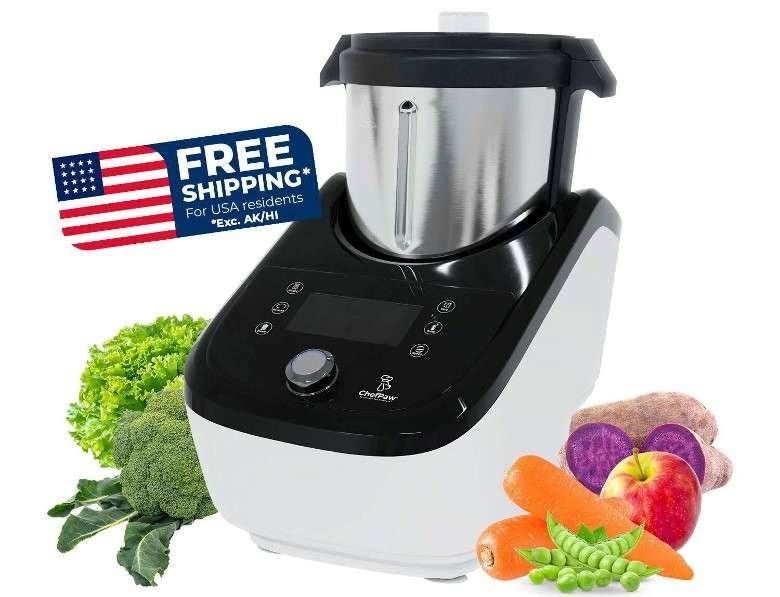In this article, we are going behind the scenes to see what all goes into making premium dog food, from who sets the guidelines to the best ingredients to use.
But we’re not stopping there, as we’ll show you have to create higher-quality premium dog food at home at lower prices than what you’ll find when shopping for premium commercial pet foods.
What Is Premium Dog Food?
Premium dog food is food formulated to meet all the nutritional needs a dog requires (complete and balanced) based on their age, breed, etc.
Additionally, they are traditionally manufactured to have no artificial flavors or colors while eliminating the use of synthetic preservatives.
Compared to less-than-premium dog foods, top-quality dog foods often have higher digestibility and higher amounts of more expensive ingredients, such as animal fat, protein, and fish oil.
They often have different amounts or ratios of other essential nutrients that are above the required minimums set forth by AAFCO (The Association of American Feed Control Officials).
Premium dog food usually has a low fat-to-protein ratio, with above-average meat content and no anonymous animal proteins.
They will have moderate amounts of carbohydrates, mainly sourced from whole grains and fibrous vegetables.
Premium dog foods are created using a wide variety of wholesome foods, then slowly and carefully cooked in small batches to avoid nutrient loss.
In commercial settings, manufacturers should be using production methods for preserving nutritional integrity while following guidelines for proper storage to maintain nutritional value.
Making Premium Dog Food At Home
Just because the label says the food is premium doesn’t make it so! Along with the word premium, words like ‘gourmet’, ‘natural’, and ‘homestyle’ are often used to disguise food created with poor ingredients by brands that aren’t frequently testing their pet foods for quality and safety.
This, along with concerns over frequent recalls due to various contamination reasons, has more pet parents interested in creating their dog’s food for them at home.
Not only does creating your dog’s meals for them at home give you complete control over the ingredients, but you also have control over the cooking process.
This is so important, because while a brand may use quality ingredients, they may be using improper cooking practices that result in overcooked and undercooked food.
Overcooking food can destroy a lot of nutrients, while undercooking can leave parts raw and can make your dog very sick.
Is The Raw Diet The Right Call?
The raw diet is a popular choice when it comes to making our dogs’ food for them at home. Composed of raw meats, bones, and vegetables while avoiding grains, the raw diet is an excellent diet when optimally put together.
Unfortunately, that isn’t easy for most pet parents, and this can be a recipe for disaster when it comes to our dogs’ health.
Many nutrient deficiencies are commonly seen with raw diets. Then handling and feeding raw meat can be dangerous to both your and your dog’s health (bacteria, parasites, etc.).
Raw bones can get obstructed in the digestive system, become stuck in a dog’s throat, and damage teeth. Despite these issues, raw diets are often more expensive when compared to more nutritional foods.
Choosing A Better Homemade Diet: The Fresh Diet
While the idea of giving our dogs an ancestral diet that mimics what they would eat had humans never gotten involved sounds nice, point blank humans got involved.
Today, a dog’s diet should be composed of pretty much all the same foods that are optimal for our health.
This means a healthy dose of protein while keeping fats low and carbohydrates in moderation. Carbs are great and energy-dense, but they should be coming from fibrous vegetables and some fruits.
Yes, I said fruits! Blueberries are full of antioxidants, bananas are rich in potassium, vitamins, biotin, fiber, and copper, and strawberries have an enzyme that can help whiten teeth.
Not only does a fresh diet provide our dogs with a wider variety of ingredients, which greatly eliminates the nutrient issues seen with raw diets, but it also reduces the risk of allergies.
While many think grains are the biggest culprits behind dog allergies, research shows proteins are the most common food allergens seen in dogs. Repeated exposure to meals with few ingredients is a quick way to trigger an allergy.
Last, unlike the raw diet, fresh meals are gently cooked, allowing for greater nutrient absorption while pretty much eliminating the bacteria and parasitic concerns.
How To Create Premium Homemade Dog Food
Composed of a variety of ingredients, creating fresh meals at home for your dog can give them a diet that none others can compare to.
They take all the advantages of raw and commercial diets and eliminate pretty much all their negatives. And they can be put together at lower prices!
Slow cooking, boiling, and pan-frying are all ways to cook your dog’s food for them, but that requires major prep work and doesn’t solve the one real issue with any homemade meal…poorly put-together at-home recipes.
When researching 200 recipes for making dog food at home, research showed 95% did not meet National Research Council or AAFCO guidelines for at least one essential nutrient — 83.5% featured multiple deficiencies.
When we put all this together, if we are being honest, most pet parents do not have the time or nutritional knowledge to take advantage of all the positives homemade diets can have for our dogs.
Well, that was until countertop dog food-making machines that do pretty much all the work for you, prepping and cooking your dog’s meals to perfection using recipes that always meet AAFCO guidelines.
Additionally, their nutrient analyzers give you custom recipes, allowing you to feed your dog an optimal diet based on their unique needs without needing a degree in pet nutritional science.
There is little to no love about a homemade dog food maker.


